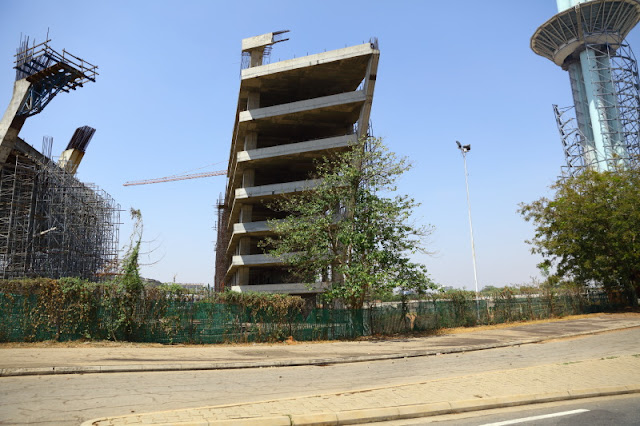 |
| so many roads lead to Abuja |
Abuja is visibly the youngest born of the Nigerian Nation, concretely sterile, unfinished and yet fast-spreading. Built in the 1980s, it became the capital of Nigeria officially in 1991 and is the centre of the Federal Capital Territory (FCT).
 |
| millenium promise under construction |
As I was leaving the city from Garki II to go to the airport, we drove through a double-laned road which obviously felt lonely considering that the space left for traffic in the opposite direction had been left undeveloped. I asked the driver about it. He said that the road in the opposite direction had not yet been built, although it had been paid for. Of course it had been planned, judging by the ready interconnections at crossroads. The government is now asking all contractors to finish their work or bring back the money that was paid to them. A few kilometres down the road, construction in the opposite direction has (re-)started.
 |
| neat and clean |
There are also many skeletons of buildings, probably interrupted a few years ago for lack of money or lack of authorisation to continue building.
 |
| Lagos State house in the shape of Eyo twins |
The skyline of Abuja is relatively flat, besides the central mosque, the National Christian centre, and the millennium tower, which was supposed to be completed for the previous millennium on Sani Abacha Way. But it could be just in time for the Third Millennium!
The city is dominated by the Aso Rock, which is at the centre of a military area. It is indeed a strategic point of observation and defence. Then, there is the diplomatic area of Maitama which has a few rich mansions with the a nice overview of the city.
Outside of the sanitised CBD, the Nigeria we are used to is filling-up the space with lively and chaotic markets. Could its undaunted spirit possibly spill over one day on CBD, its sleepy neighbour?
Comments
Post a Comment